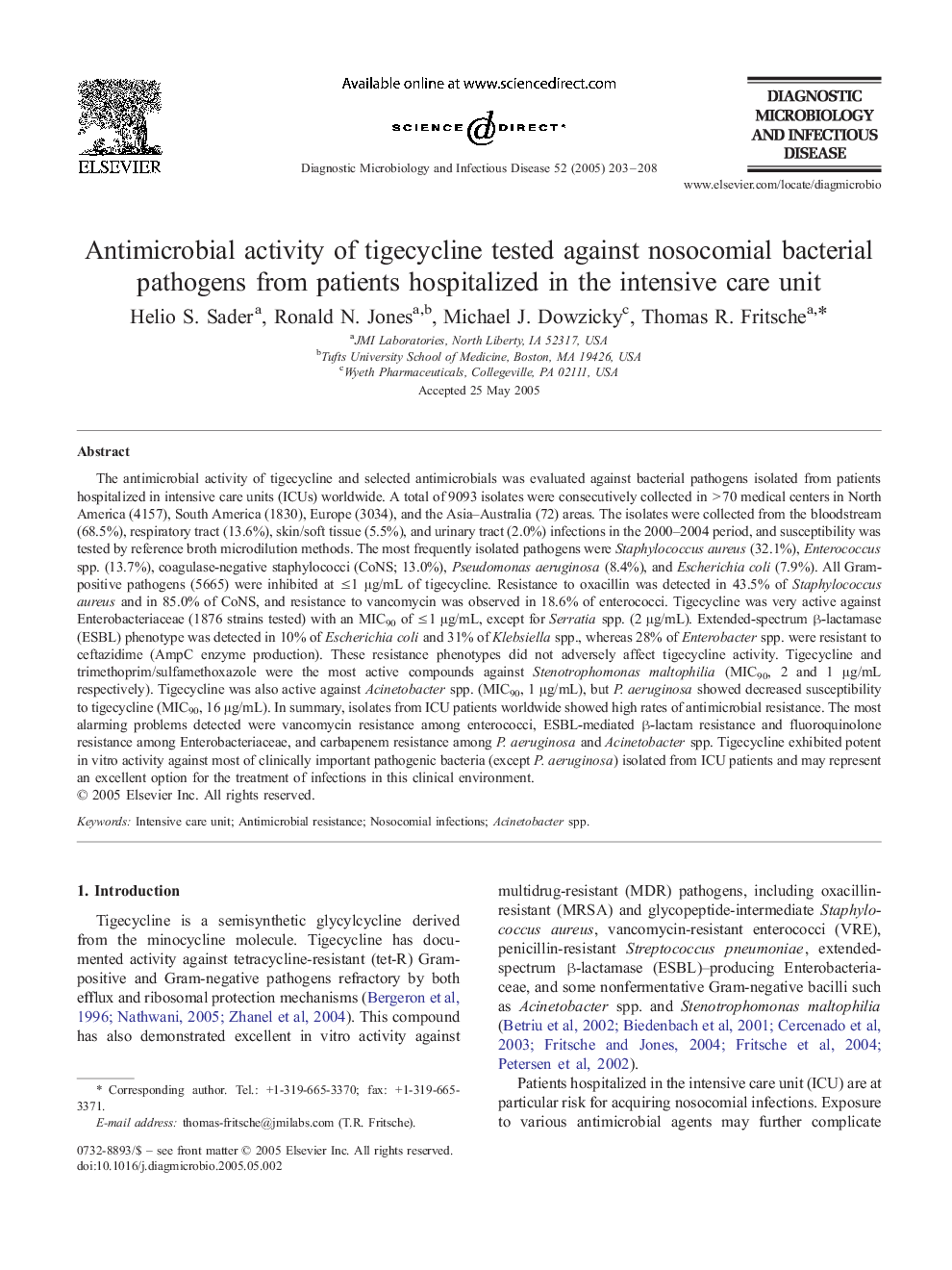| Article ID | Journal | Published Year | Pages | File Type |
|---|---|---|---|---|
| 9263299 | Diagnostic Microbiology and Infectious Disease | 2005 | 6 Pages |
Abstract
The antimicrobial activity of tigecycline and selected antimicrobials was evaluated against bacterial pathogens isolated from patients hospitalized in intensive care units (ICUs) worldwide. A total of 9093 isolates were consecutively collected in >70 medical centers in North America (4157), South America (1830), Europe (3034), and the Asia-Australia (72) areas. The isolates were collected from the bloodstream (68.5%), respiratory tract (13.6%), skin/soft tissue (5.5%), and urinary tract (2.0%) infections in the 2000-2004 period, and susceptibility was tested by reference broth microdilution methods. The most frequently isolated pathogens were Staphylococcus aureus (32.1%), Enterococcus spp. (13.7%), coagulase-negative staphylococci (CoNS; 13.0%), Pseudomonas aeruginosa (8.4%), and Escherichia coli (7.9%). All Gram-positive pathogens (5665) were inhibited at â¤1 μg/mL of tigecycline. Resistance to oxacillin was detected in 43.5% of Staphylococcus aureus and in 85.0% of CoNS, and resistance to vancomycin was observed in 18.6% of enterococci. Tigecycline was very active against Enterobacteriaceae (1876 strains tested) with an MIC90 of â¤1 μg/mL, except for Serratia spp. (2 μg/mL). Extended-spectrum β-lactamase (ESBL) phenotype was detected in 10% of E. coli and 31% of Klebsiella spp., whereas 28% of Enterobacter spp. were resistant to ceftazidime (AmpC enzyme production). These resistance phenotypes did not adversely affect tigecycline activity. Tigecycline and trimethoprim/sulfamethoxazole were the most active compounds against Stenotrophomonas maltophilia (MIC90, 2 and 1 μg/mL respectively). Tigecycline was also active against Acinetobacter spp. (MIC90, 1 μg/mL), but P. aeruginosa showed decreased susceptibility to tigecycline (MIC90, 16 μg/mL). In summary, isolates from ICU patients worldwide showed high rates of antimicrobial resistance. The most alarming problems detected were vancomycin resistance among enterococci, ESBL-mediated β-lactam resistance and fluoroquinolone resistance among Enterobacteriaceae, and carbapenem resistance among P. aeruginosa and Acinetobacter spp. Tigecycline exhibited potent in vitro activity against most of clinically important pathogenic bacteria (except P. aeruginosa) isolated from ICU patients and may represent an excellent option for the treatment of infections in this clinical environment.
Related Topics
Life Sciences
Immunology and Microbiology
Applied Microbiology and Biotechnology
Authors
Helio S. Sader, Ronald N. Jones, Michael J. Dowzicky, Thomas R. Fritsche,
